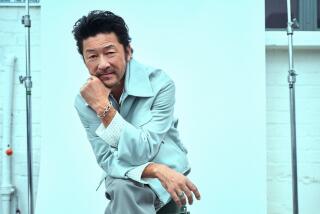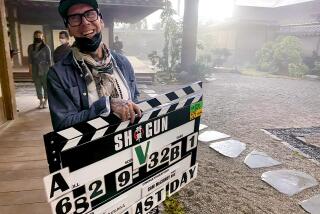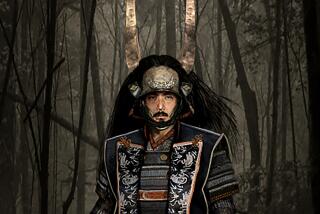MOVIE REVIEW : Epic Battle Moves ‘Heaven and Earth’
- Share via
Haruki Kadokawa’s “Heaven and Earth” (AMC Century 14) contains some of the greatest battle scenes ever filmed, sequences that draw immediate comparison with those in Akira Kurosawa’s “Kagemusha” and especially “Ran.” It offers by no means, however, as rich and complex an experience as the Kurosawa films but is instead a beautiful, fast-moving Japanese period picture in the classic manner made accessible by easy-to-read idiomatic English subtitles augmented by English narration by Stuart Whitman. (Not since the 1962 “Chushingura” has a Japanese picture been so carefully prepared for American audiences.)
Those battle sequences, which occupy the 103-minute film’s final half-hour, could in fact have used some more buildup. We really would like to know more about the film’s key antagonists and their principal supporters.
There’s a sense that the film’s crucial spiritual dimension has been somewhat foreshortened; ironically, Kadokawa is himself a Shinto priest (as well as one of Japan’s top publishers). In any event, the film ran 13 minutes longer in its Japanese release.
The time is the strife-torn 16th Century, a feudal era much mined by Japanese filmmakers, a time when regional warlords were challenging the authority of the Shogun, the country’s military ruler. Our hero is the handsome young Kagetora (Takaaki Enoki), a devout Shintoist from Echigo, who has reluctantly but successfully overthrown his corrupt brother and is looking forward to peace for his people.
Unfortunately, Echigo has become the target of the fierce-looking Takeda (Masahiko Tsugawa) of the Kai district who is determined to try to unite all of Japan under his rule.
In adapting a novel by Chogoro Kaionji centered on a battle as historic as that of Gettysburg, Kadokawa and his collaborators take care to create an aura of inevitability as circumstances draw Kagetora into all-out war much against his will.
There’s a sense of short shrift in regard to Kagetora’s feelings for the exquisite Nami (Atsuko Asano), the intrepid and exceptionally forthright daughter of his chief--and ultimately traitorous--adviser Usami (Tsunehiko Watase). Kagetora tells Nami he has forsworn sexual pleasure but we’re never told why; much later, we learn, much to our surprise, that he has always loved her.
“Heaven and Earth” does move rapidly to its raison d’etre, the lengthy and elaborate battle of Kawanakajima, filmed in the vastness of Alberta, Canada, because the original site in Japan has been so drastically altered. Luckily for us, the warriors come color-coded: the good guys wear black while Takeda and his regiments, all in blood red, move across the plains like a brush fire.
So superbly are the series of encounters choreographed that war takes on the look of an elaborate game of chess; with their carapace-like armor, the soldiers do in fact look like intricately designed chess pieces. As fine as Yonezo Maeda’s no-nonsense camerawork is and as suitably stirring as Tetsuya Komura’s score is, the film’s most creative credit is that of costume designer Yoko Tashiro’s more than 4,900 (!) outfits, many of them incredibly detailed in their barbaric splendor. Kadokawa may be no Kurosawa, but “Heaven and Earth” (rated PG-13 for battlefield bloodshed) will be welcomed by lovers of that nearly extinct species: the samurai movie.
‘Heaven and Earth’
Takaaki Enoki: Kagetora
Takeda Masahiko: Tsugawa
A Triton Pictures release of a Kadokawa production. Director Haruki Kadokawa. Producer Yutaka Okada. Screenplay by Toshio Kamata, Isao Yoshihara and Kadokawa; based on a novel by Chogoro Kaionji. Running time: 1 hour, 43 minutes.
MPAA-rated PG-13 (Some material may be inappropriate for children younger than 13).
More to Read
Only good movies
Get the Indie Focus newsletter, Mark Olsen's weekly guide to the world of cinema.
You may occasionally receive promotional content from the Los Angeles Times.










